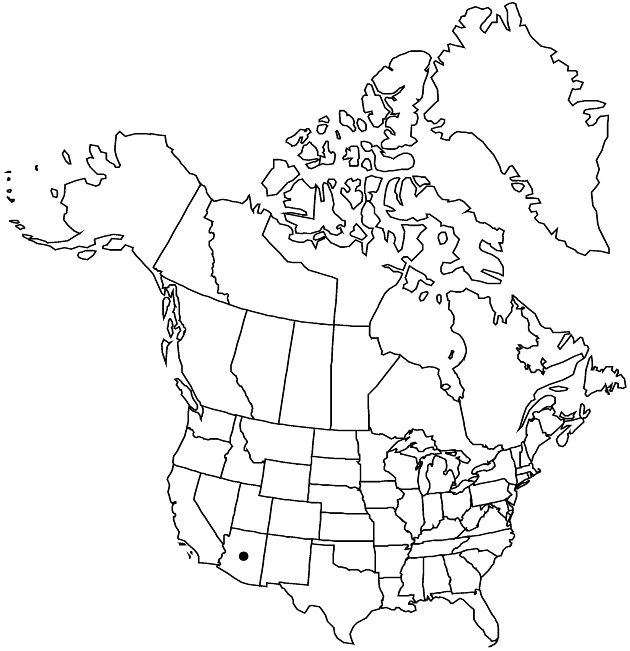Hymenoxys ambigens var. floribunda
Brittonia 51: 84. 1999.
EndemicConservation concern
Basionym: Plummera floribunda A. Gray Proc. Amer. Acad. Arts 17: 215. 1882
Synonyms: Hymenoxys microcephala Bierner
Revision as of 21:37, 29 July 2020 by imported>Volume Importer
Plants 30–150 cm. Heads (25–) 100–350+. Phyllaries: outer 3–4, basally connate 3/4 their lengths, 4–6 mm, apices rounded to usually obtuse to sometimes acute; inner 3–4, 3.2–4 mm, apices rounded or obtuse to weakly acute or mucronate. Ray-florets 3–4; corollas 4.5–6 × 2–2.5 mm. Disc-florets 6–13. Cypselae 3–3.5 mm, hairs strongly wavy; pappi 0 or of 2–4 scales 1–2 mm. 2n = 30.
Phenology: Flowering Jun–Oct.
Habitat: Savannas, oak-juniper woodlands, pine forests
Elevation: 1500–2300 m
Discussion
Of conservation concern.
Variety floribunda is known from the Chiricahua, Dos Cabezas, Dragoon, Little Dragoon, and Mule mountains.
Selected References
None.
Lower Taxa
None.
... more about "Hymenoxys ambigens var. floribunda"
introrse +
connate +
herbaceous +
inner +
obtuse;weakly acute or mucronate +
scarious +
absent +
hirsute +
papillate +
continuous +
decurrent +
simple +
lobed +
winged;ribbed;winged;ribbed +
1;15 +
stigmatic +
35;150 +
absent +
zygomorphic +
yellow +
monomorphic +
dimorphic +
obconic +
3mm;3.5mm +
staminate +
staminate +
Ariz. +
straight +
distinct +
proximal +
1;5 +
bisexual +
dispersed +
corymbiform +
singly +
wavy +
indeterminate +
100;350 +
surrounding +
campanulate;narrowly campanulate +
alternate +
deltate +
connate +
2-carpellate +
inferior +
attached +
anatropous +
persistent +
falling +
absent +
tough +
thick +
absent +
connate +
persistent +
distinct +
falling +
unequal +
Brittonia +
1999 +
pistillate +
absent +
fertile +
epaleate +
conic;ovoid;conic;ovoid;hemispheric +
fibrous +
absent +
lanceolate +
exalbuminous +
modifed +
subequal;unequal +
alternate +
branched +
purple-red-tinted +
erect +
2-branched +
papillate +
Hymenoxys ambigens var. floribunda +
Hymenoxys ambigens +
variety +
shorter +
dilated +
equaling +
perennial +
